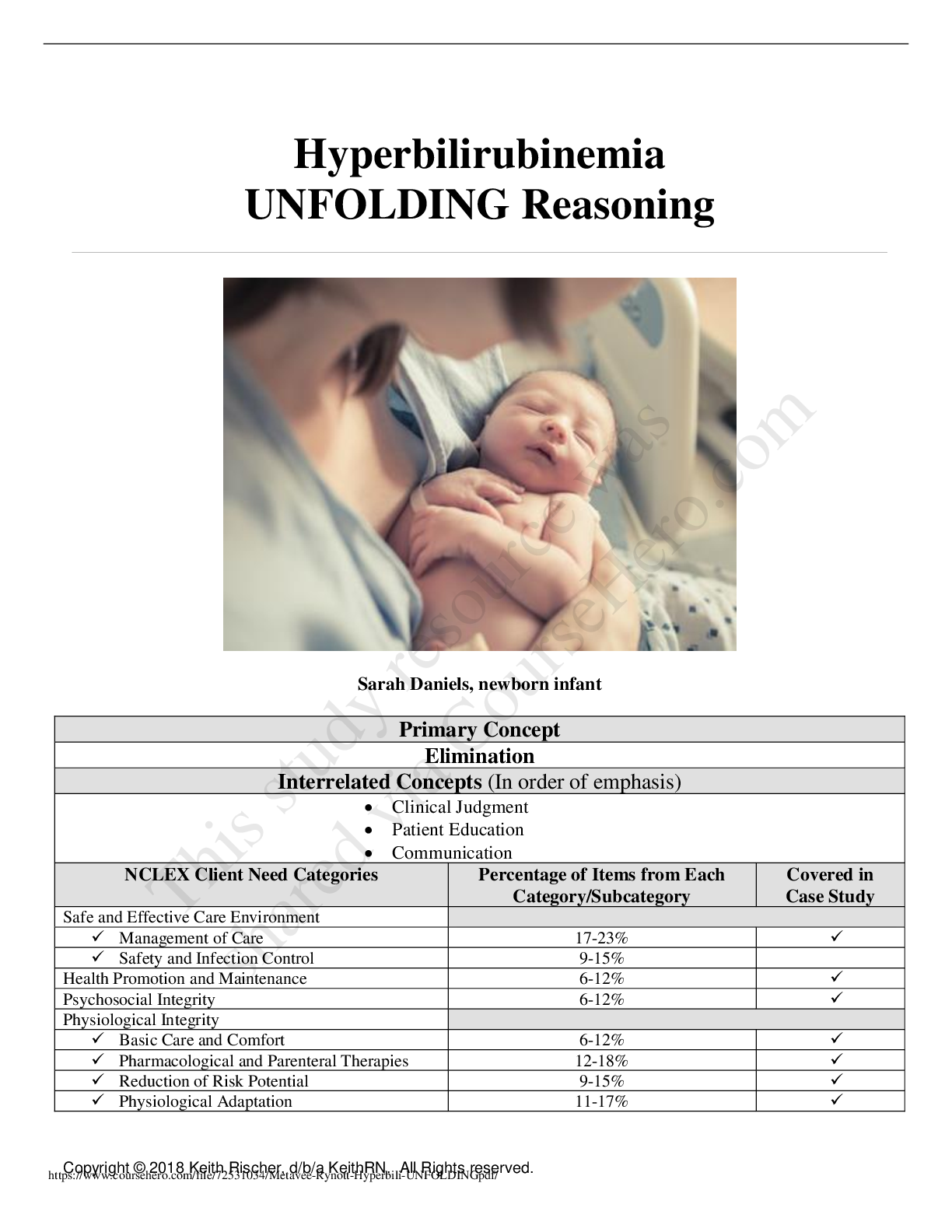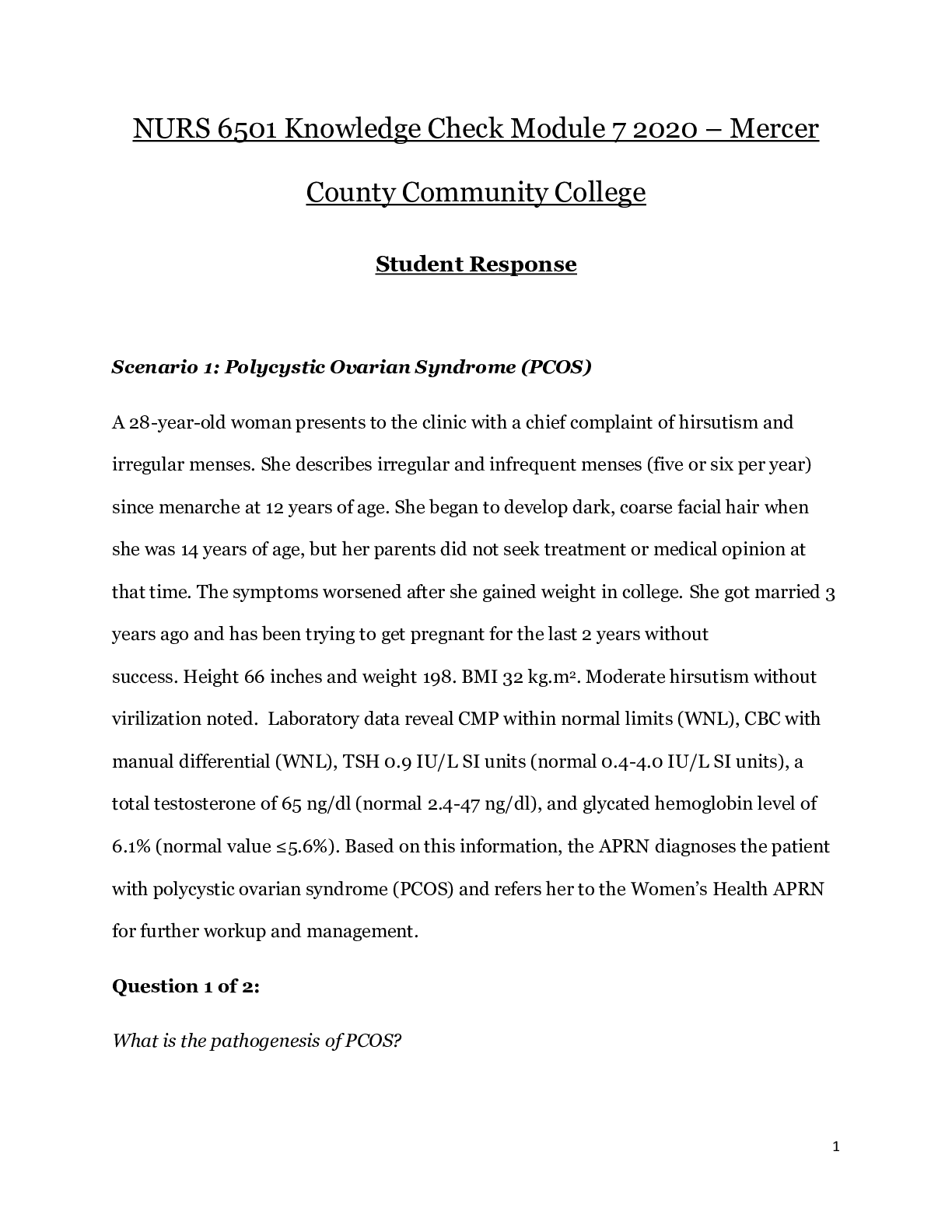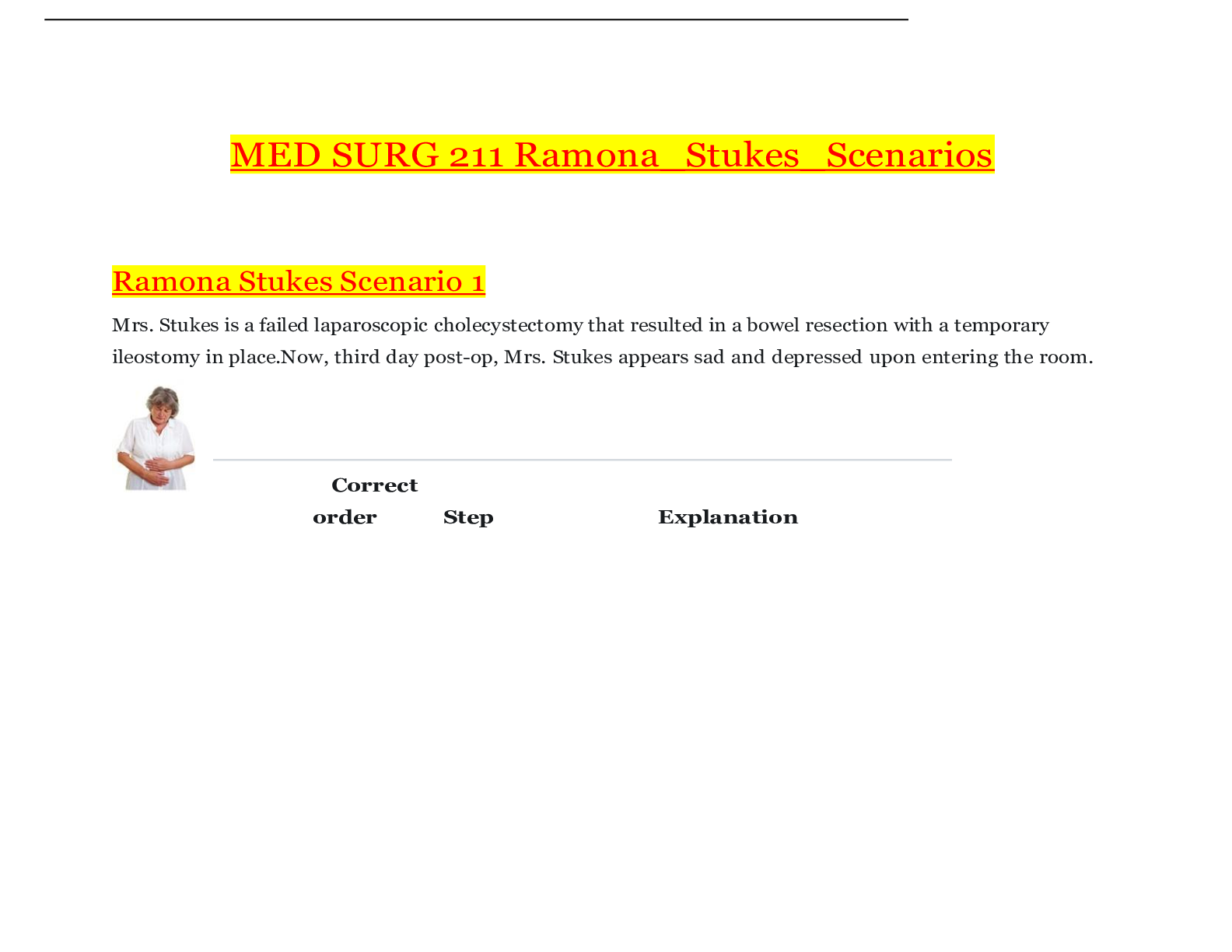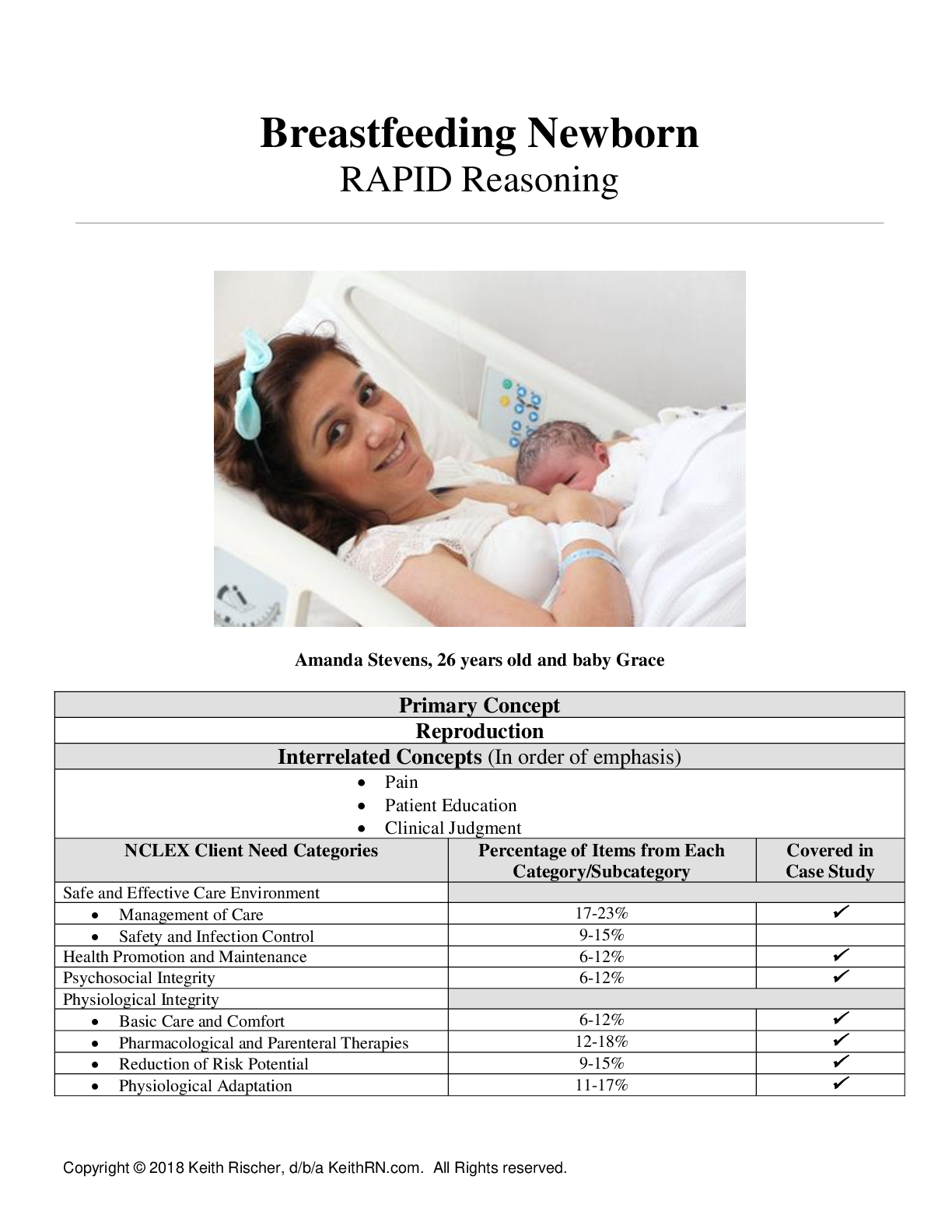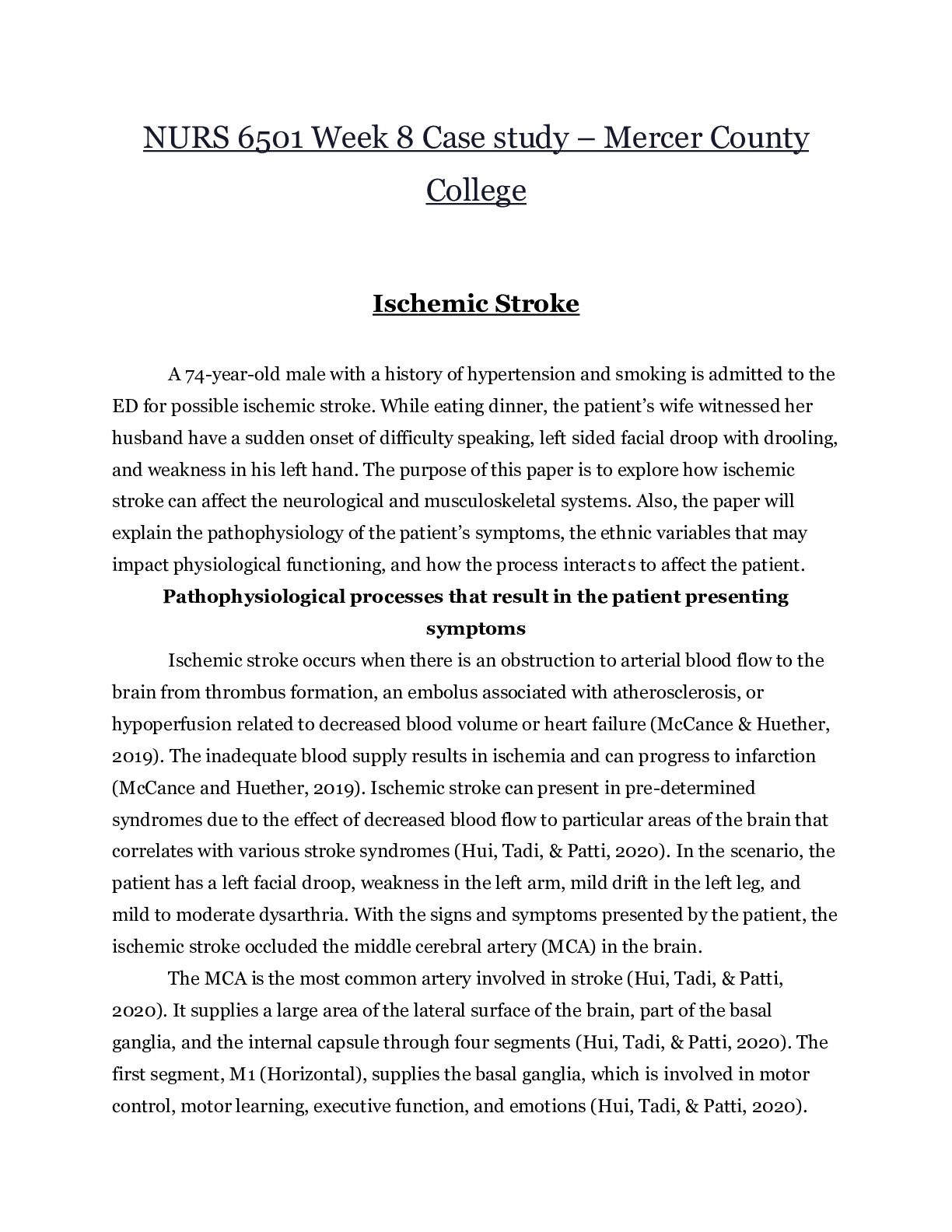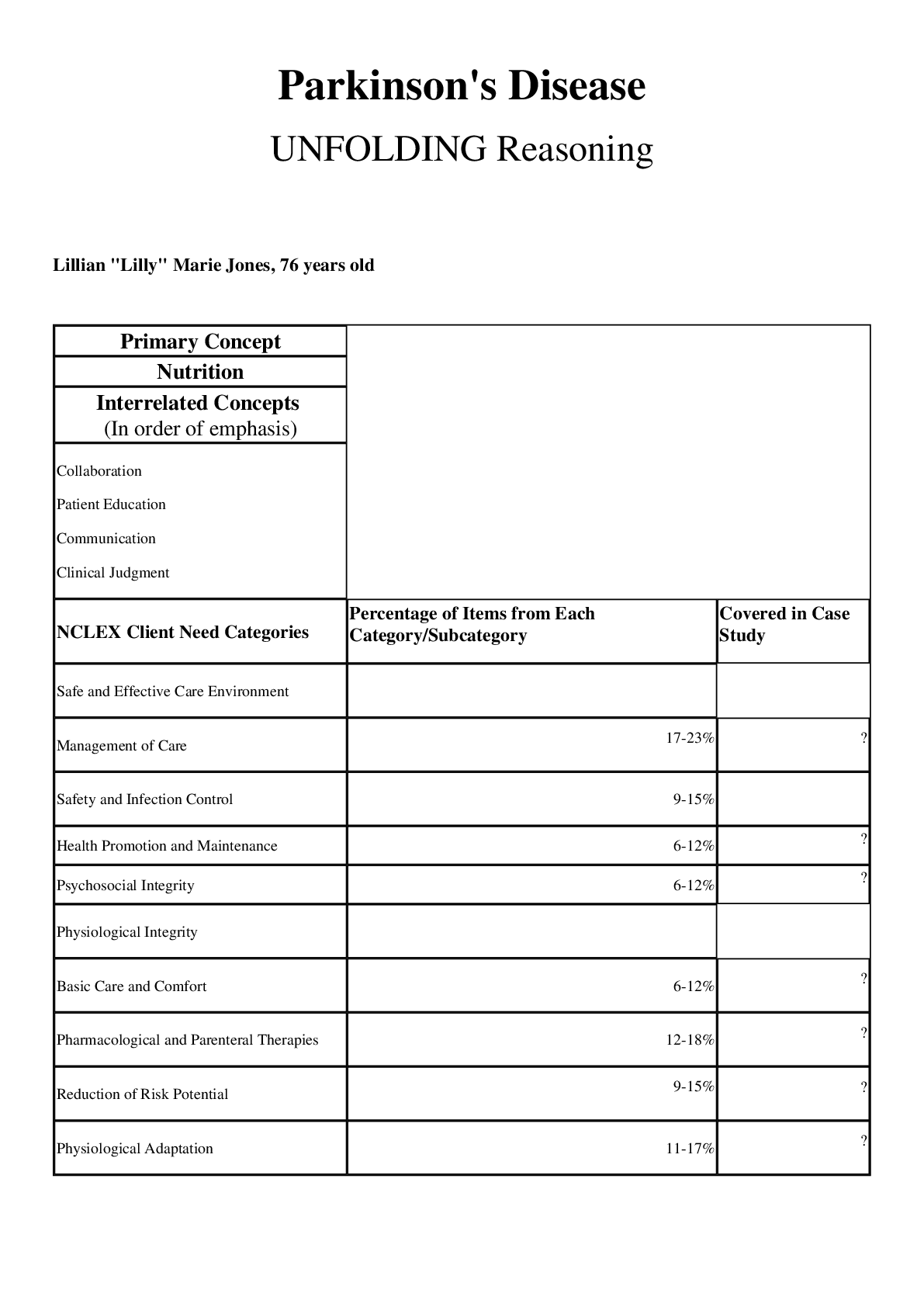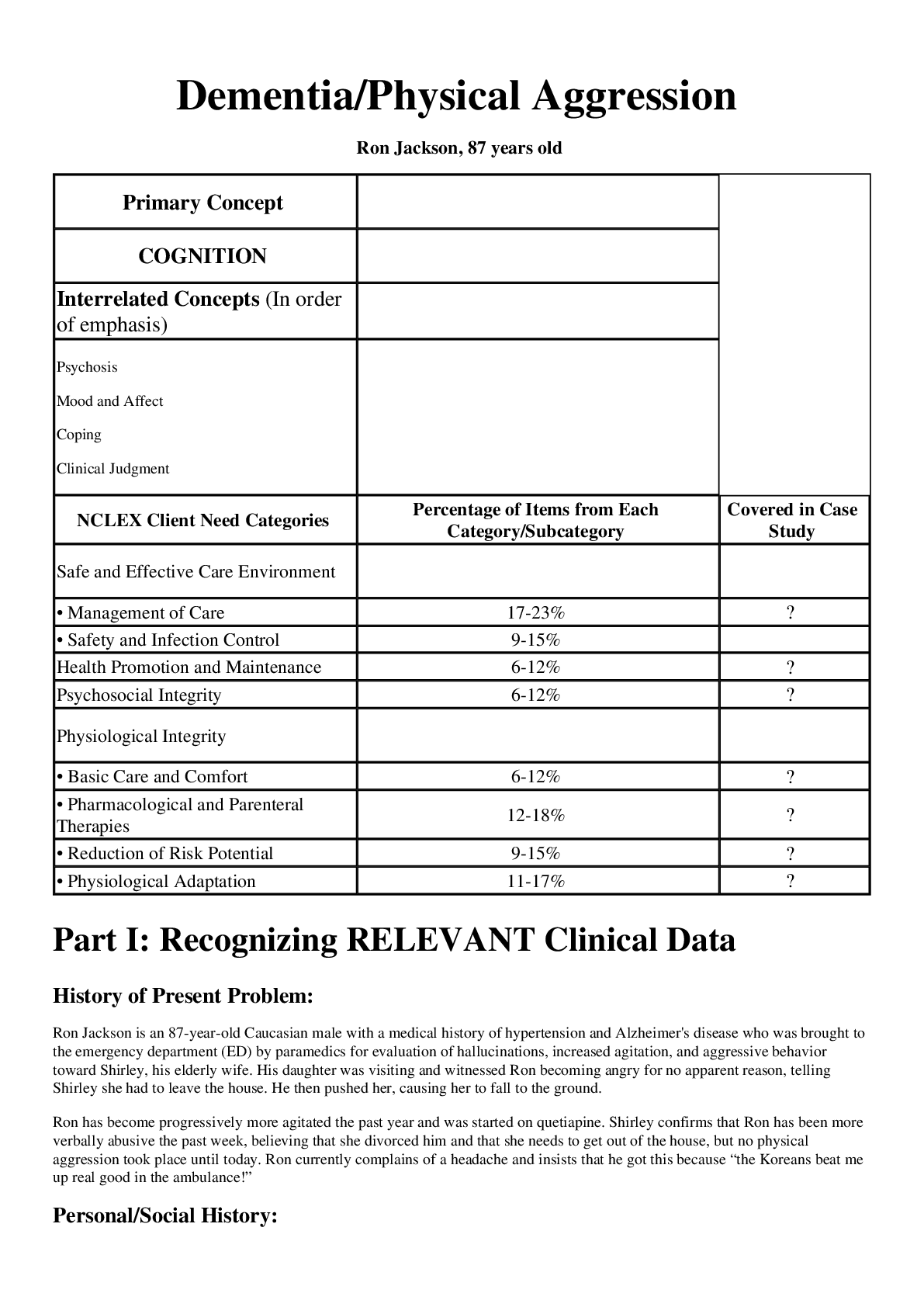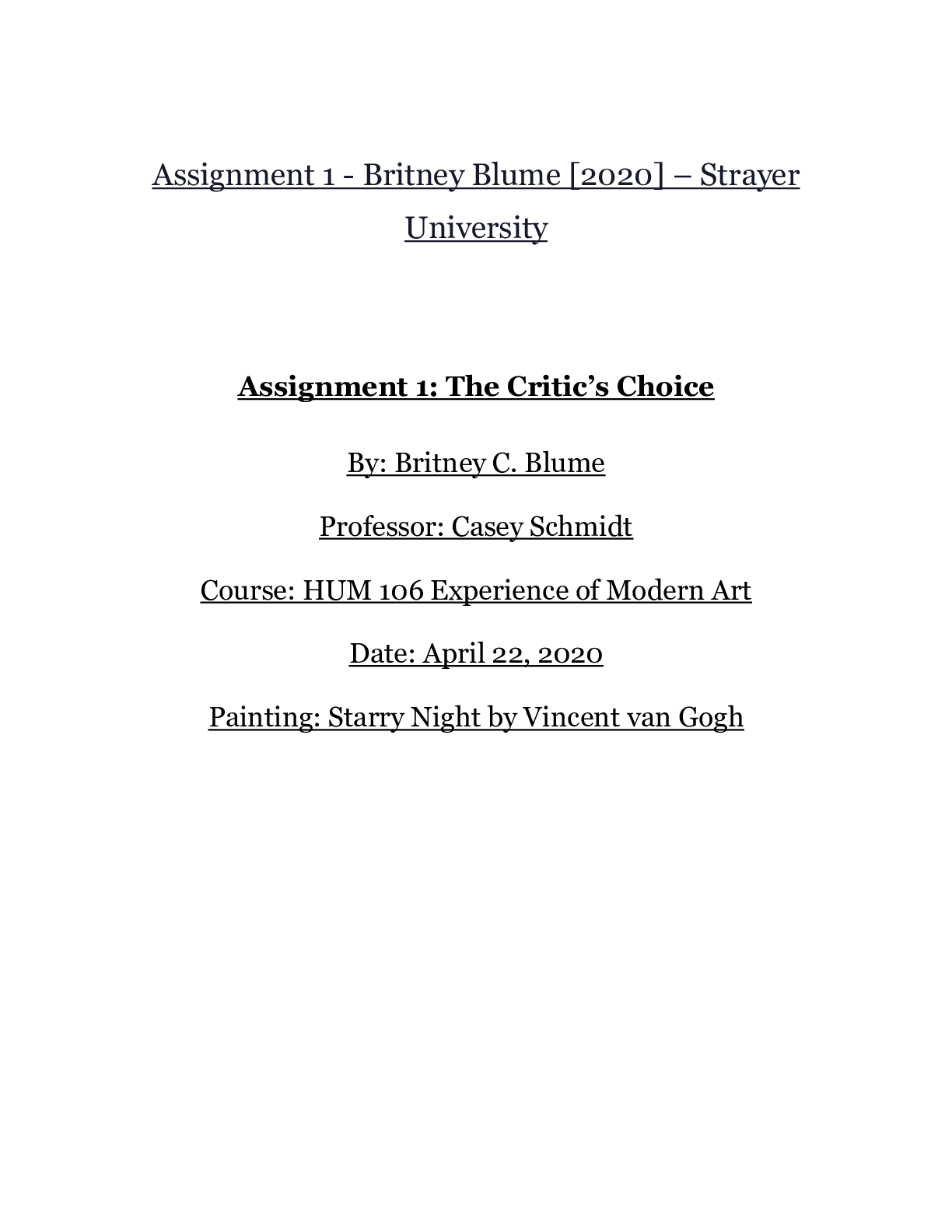*NURSING > CASE STUDY > Evolving Case Study - Sepsis (1)_2020 | VN 39 Evolving Case Study - Sepsis (1) (All)
Evolving Case Study - Sepsis (1)_2020 | VN 39 Evolving Case Study - Sepsis (1)
Document Content and Description Below
Evolving Case Study - Sepsis (1) History of Present Problem: Jean Kelly is an 82-year-old woman who has been feeling more fatigued the last three days and has had a fever the last twenty-four h... ours. She reports a painful, burning sensation when she urinates as well as frequency of urination the last week. Her daughter became concerned and brought her to the emergency department (ED) when she did not know what day it was. She is mentally alert with no history of confusion. While taking her bath today, she was weak and unable to get out of the tub and used her personal life alert button to call for medical assistance. Personal/Social History: Jean lives independently in a senior apartment retirement community. She is widowed and has two daughters who are active and involved in her life. What data from the histories are important and RELEVANT and have clinical significance for the nurse? RELEVANT Data from Present Problem: Clinical Significance: Fatigue, fever, painful, burning, and frequent urination. Changes in mental status. Patient is having symptoms of urinary tract infection request urinalysis. Confusion is a common presentation of UTI in the elderly. RELEVANT Data from Social History: Clinical Significance: Lives independently in a senior apartment. Patient has a safe place for discharge. What is the RELATIONSHIP of your patient’s past medical history (PMH) and current medications? (Which medications treat which conditions?) PMH Home Medications Pharm Classification Expected Outcome Diabetes type 2 Hyperlipidemia Hypertension (HTN) Gout 1. Allopurinol 100 mg PO bid Antigout agent Decreased Production of uric acid to reduce gout fares. 2. ASA 81 mg PO daily Antiplatelet/Salicylate Reduce platelet aggregation and clumping to prevent clotting. 3. Pioglitazone 15 mg PO daily Thiazolidinedione/antidiabetic Reduce and controls blood glucose levels. 4. Simvastatin 20 mg PO daily Antihypertensive Reduce cholesterol/blood lipid levels. 5. Metoprolol 25 mg PO bid Beta blocker Reduce blood pressure 6. Lisinopril 10 mg PO daily Ace inhibitor Reduce blood pressure 7. Furosemide 20 mg PO daily Loop diuretic Reduce BP through Diuresis 8. Potassium chloride 20 mEq PO daily K supplement Replaces K in the body last through diuresis. Complete a Concept Map for DIABETES TYPE 2: Disease Process • Complete evaluation of Pathophysiology: What is the disease? • Etiology (cause) of the disease? • Chronicity of the disease? What happens long term? • Prognosis of the patient with this disease? 1. Characterized by peripheral insulin resistance, impaired regulation of hepatic glucose production. 2. With type 2 diabetes, the body either doesn’t produce enough insulin or it resists insulin. 3. Long term complications of type 2 diabetes are diabetic retinopathy, kidney disease, diabetic neuropathy, and macrovascular problems. 4. The prognosis can be Heart attack, stroke, kidney disease which can result in premature death. Risk Factors (List 3 or more) 1. Overweight or obese 2. Have high blood pressure 3. Have a low level of HDL cholesterol, or a high level of triglycerides. Signs / Symptoms • Blurred vision • Fatigue • Increased thirst • Weight loss • Frequent urination • Hyperglycemia Potential Complications • Retinopathy • Kidney disease • Nerve Damage • Macrovascular Complications -- - - - - - - - - - - - - - - - - - Assessment Most recent Vital signs: RELEVANT body system nursing assessment data: RELEVANT lab values: How have you advanced the plan of care? Patient response: INTERPRETATION of current clinical status (stable/unstable/worsening): Recommendations Suggestions to advance plan of care: Education Priorities / Discharge Planning: 1. What will be the most important discharge/education priorities you will reinforce with Jean’s medical condition to prevent future readmission with the same problem? 2. What are some practical ways you as the nurse can assess the effectiveness of your teaching with this patient? Caring and the “Art” of Nursing 1. What is the patient likely experiencing/feeling right now in this situation? 2. What can you do to engage yourself with this patient’s experience, and show that he/she matters to you as a person? Use Reflection to THINK like a Nurse 1. What did I learn from this scenario? 2. How can I use what has been learned from this scenario to improve patient care in the future? [Show More]
Last updated: 1 year ago
Preview 1 out of 25 pages
Instant download
 - Keiser.png)
Buy this document to get the full access instantly
Instant Download Access after purchase
Add to cartInstant download
Reviews( 0 )
Document information
Connected school, study & course
About the document
Uploaded On
Feb 20, 2021
Number of pages
25
Written in
Additional information
This document has been written for:
Uploaded
Feb 20, 2021
Downloads
0
Views
80

